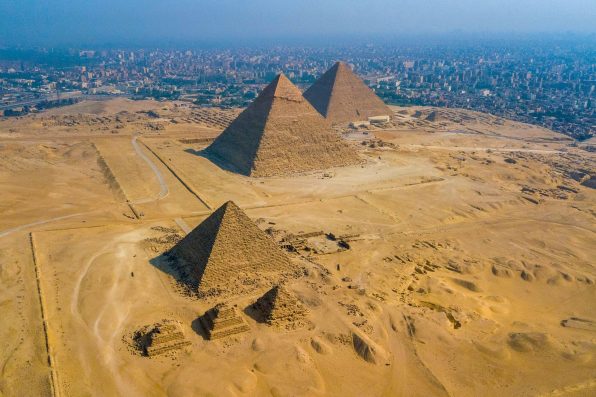Ancient Egyptians Caused The First Major Case Of Human Pollution By Using Large Amounts Of Copper For Metalworking And Contaminating A Harbor Near The Giza Pyramids

About 4,600 years ago, ancient Egyptian laborers built the Great Pyramid of Giza one stone at a time. Nearby was the Khufu Harbor, the oldest known port in the world. In this harbor, researchers have identified traces of metal contamination caused by humans. It is the first major case of human pollution.
The Giza necropolis has shown signs of the persistent practice of metalworking—an aspect of ancient Egyptian civilization that is not discussed very often, as it is largely overshadowed by the study of pyramids, tombs, and mummies.
The researchers used geochemical tracers to analyze metalworking activities around Khufu Harbor. The harbor was located near the Giza Plateau along a branch of the Nile River that no longer exists.
It was used for the transportation of materials and making copper tools. The tools consisted of chisels, blades, and drills to work with wood, limestone, and textiles. Some of the tools were alloyed with arsenic to enhance their durability.
The research team also utilized inductively coupled plasma-mass spectrometry (ICP-MS) to measure levels of copper, arsenic, iron, aluminum, and titanium. They dated metal contamination back to around 3265 B.C.E., which was earlier than they had anticipated.
Contamination during the Predynastic period indicated that human occupation and metalworking at Giza started over 200 years earlier than previously thought. The metal contamination was at its height around 2500 B.C.E. during late pyramid construction. It persisted until about 1000 B.C.E.
“We found the oldest regional metal contamination ever recorded in the world,” Alain Verón, a geochemist from Aix-Marseille Université in France, said.
During this period, the levels of copper were five to six times higher than what would be considered natural levels. That meant significant industrial activity had taken place there.
The study also revealed how ancient Egyptians dealt with environmental challenges. Metalworking continued as the water levels in the Nile River dropped and the Khufu Harbor shrank.

imaam – stock.adobe.com – illustrative purposes only
Around 2200 B.C.E., the Nile was at its lowest. At that time, civil unrest and rumors of cannibalism were rampant. Still, metal contamination remained high, implying that the metalworking industry was incredibly resilient.
The depleting Nile presented new opportunities for local communities. As the water dried up, fertile floodplains were exposed, allowing people to participate in agricultural activities. Previous research pointed to pollen grains as evidence. Even when pyramid construction at Giza halted, metalworking was still commonplace.
Copper pollution can negatively affect both humans and animals. Overexposure to metals can cause nausea, vomiting, diarrhea, and abdominal pain. Long-term exposure can lead to liver and kidney damage.
It is unclear whether living among the pollution surrounding the Giza pyramids gave residents health issues. However, the presence of the metal in soil samples shed some light on the lives of everyday ancient Egyptians, not just the elite members of their society.
The study was published in the journal Geology.
Sign up for Chip Chick’s newsletter and get stories like this delivered to your inbox.
More About:News